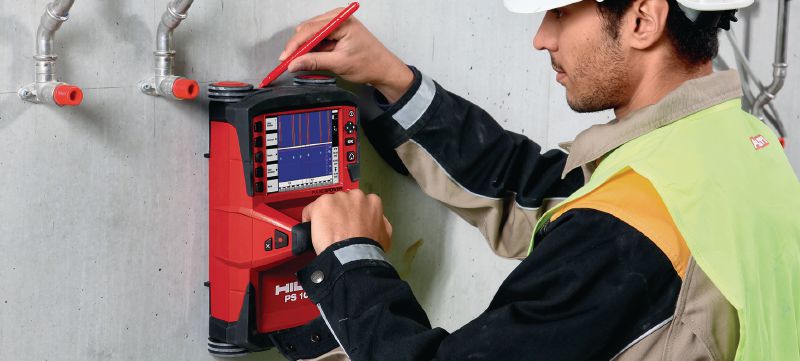RainierGPR Service Areas: Top Concrete Scanning Solutions Across Regions
Concrete Scanning: A Crucial Action Towards Making Sure Structural Honesty and Security
In the realm of building and infrastructure upkeep, the importance of concrete scanning can not be overemphasized. By utilizing advanced technology and techniques, concrete scanning serves as an essential tool in ensuring that the honesty and safety of structures and bridges are promoted to the greatest criteria.
Significance of Concrete Scanning
Concrete scanning plays a critical role in making certain the architectural stability and safety and security of buildings and framework jobs. By making use of advanced technologies such as ground-penetrating radar (GPR) and electro-magnetic induction, professionals can non-destructively evaluate concrete structures to find prospective defects, spaces, ingrained objects, and reinforcement design. This process allows very early discovery of abnormalities that might jeopardize the stability of a structure, stopping pricey damages and guaranteeing the safety and security of occupants.
Concrete scanning is particularly crucial during the planning and building phases of a task. Prior to boring, reducing, or coring right into concrete, scanning helps recognize the precise locations of rebar, post-tension cables, and various other ingrained components, reducing the risk of unintended hits that could result in structural weaknesses. Additionally, concrete scanning aids in quality assurance by confirming the thickness of concrete covers and identifying any kind of discrepancies that might influence the total durability of the framework. Inevitably, purchasing concrete scanning solutions is not just a proactive procedure to minimize risks however likewise an essential step towards maintaining the lasting safety and security and security of buildings and infrastructure.
Modern Technology for Concrete Inspection

Benefits of Early Detection
Timely discovery of structural issues can significantly reduce dangers and ensure the longevity of building jobs. By determining possible problems early in the building and construction procedure, stakeholders can take proactive steps to address problems before they intensify into larger and much more pricey troubles. Among the crucial advantages of very early discovery is the avoidance of architectural failings, which can posture significant safety risks and lead to job delays and financial losses.
Additionally, early detection enables for timely repairs and upkeep, which can assist prolong the lifespan of the structure. By addressing problems immediately, building teams can avoid pricey fixings or perhaps the demand for premature replacement of architectural elements. This aggressive technique not only conserves time and cash however likewise enhances the overall safety and security and durability of the construction task.
In addition, very early detection can boost job planning and decision-making by Get More Information giving stakeholders with useful insights right into the condition of the structure. Equipped with this info, project supervisors can make educated selections regarding building and construction products, timelines, and methods, bring about more effective and effective task results.
Guaranteeing Structural Security
Making sure the structural stability of a building job is extremely important to its safety and durability. Concrete scanning plays a critical duty in ensuring structural stability by discovering possible concerns such as gaps, delamination, or support deterioration that could jeopardize the stability of the structure over time.
By utilizing sophisticated scanning innovations like ground-penetrating radar (GPR) and electromagnetic induction, building and construction specialists can non-invasively check concrete frameworks to determine areas of problem under the surface area. This positive technique enables the early discovery of weak points or flaws, making it possible for timely repair work or support to stop structural failings.
Routine concrete scanning during various construction stages and throughout the life process of a structure can aid keep its security, alleviate threats, and make sure the security of owners. By prioritizing architectural stability via concrete scanning, building jobs can enhance their strength and resilience, ultimately adding to greater safety and long life.

Stopping Vital Failures
Applying regular assessments, such as concrete scanning, can disclose hidden problems like spaces, splits, or corrosion that might endanger the honesty of a structure. By utilizing sophisticated scanning modern technologies like Ground Penetrating Radar (GPR) or Concrete X-ray, engineers can non-destructively evaluate the problem of concrete and determine weak factors that need reinforcement or repair.

Verdict
Finally, concrete scanning plays a critical function in making sure architectural honesty and safety by making use of advanced technology for very early detection of possible issues. This positive method aids stop important failings and makes sure the security of frameworks. It is essential to focus on concrete examination as a conventional practice to shield the longevity and security of structures and framework.
Concrete scanning plays a critical function in making sure the structural integrity and safety of structures and infrastructure tasks. visit this site In addition, concrete scanning help in top quality control by validating the thickness of concrete covers and spotting any kind of disparities that might affect the general resilience of the structure. Concrete scanning plays this link a critical function in making certain structural security by identifying potential concerns such as spaces, delamination, or reinforcement deterioration that might endanger the honesty of the structure over time.

In final thought, concrete scanning plays a critical role in making sure structural integrity and security by making use of sophisticated technology for early detection of prospective concerns.